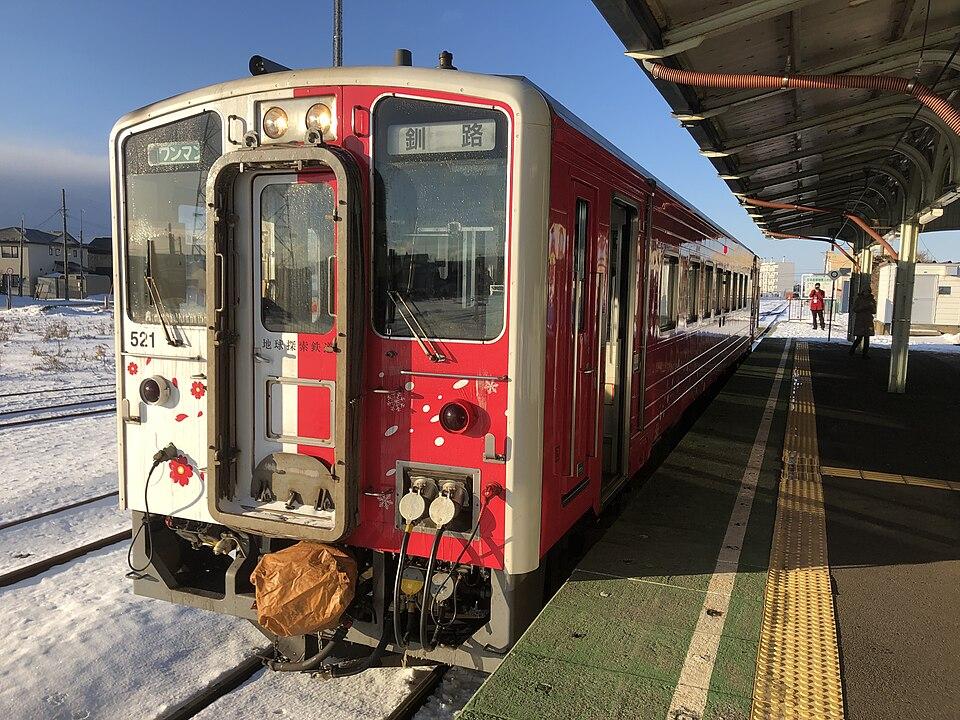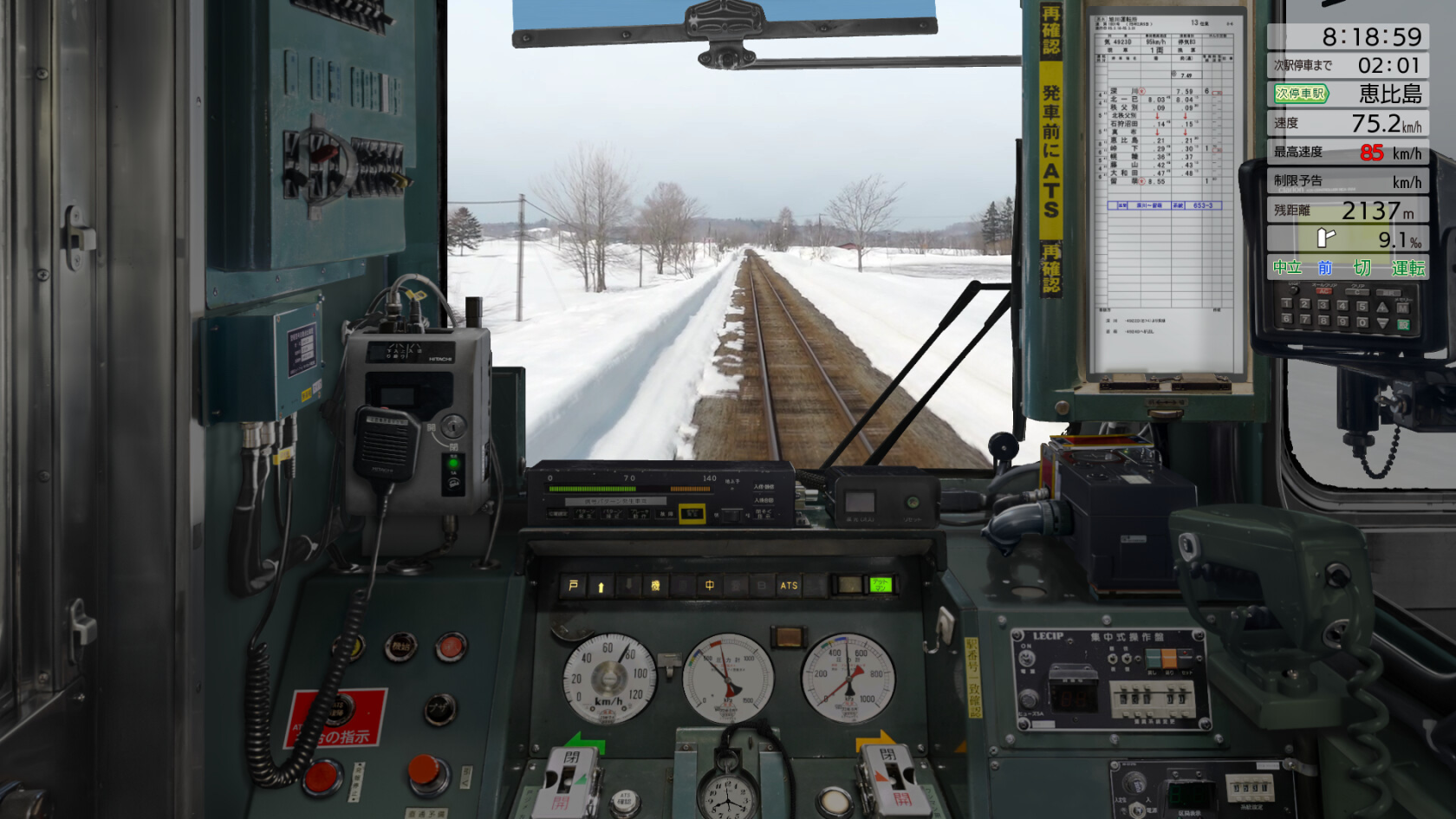KiHa 54 series
 (By Associate professor - CC BY-SA 4.0)
(By Associate professor - CC BY-SA 4.0)
Présentation
The JNR Kiha 54 diesel railcar (JNR Kiha 54 Gata Kidosha) is a general-purpose diesel railcar produced by Japan National Railways (JNR) from 1986.
Two types were produced: a hot-region type (KIHA54 1 -) for Shikoku and a very cold-region type (KIHA54 501 -) for Hokkaido, and there are notable differences in the specifications and shape of each part.
Console details
On the left, you can see the safety radio equipment.
In the center are several components. At the top is the ATS-Dn gauge, which operates in much the same way as the ATS-Ps. This is only used when departing from or arriving at Fukagawa station.
Then there are various indicators:
- 戸: "Doors closed" indicator
- ↑: Indicates that the train is moving forward
- ↓: Indicates that the train is in reverse gear
- 機: Lit when the engine is running
- 直: "Direct transmission" gear shift position
- 中: "Neutral" gear shift position
- 変: "Gear shifting" gear shift position
- B: ?
- ATS: ATS-Sn indicator. Turns red when ATS is activated.
-
耐雪ブレーキ: Snow resistant brakes
Then there are 3 dials: the speed dial, the ER (Equalizing reservoir - black needle) / MR (Main reservoir - red needle) pressure dial and the BP (Brake pipe - black needle) / BC (Brake cylinder - red needle) pressure dial.
Finally, on the right, you can see the timetable for the chosen route. This is the first line offering direct integration of the timetable into the game.
Special driving features
The KiHa 54 train is different from the other trains in the simulator. In addition to the power handle, you need to manage the automatic air brake and the gearshift handle.
2 modes are available in the simulator parameters (System tab):
- Simplified: Driving is the same as for other trains.
- Realistic: Air brake and gear shifting must be managed manually, see below.
Air brake
Braking is via pneumatic brakes, with a dedicated 4-position handle. Braking power is managed via the right-hand dial and its 2 needles: the red BC needle and the black BP needle. The 4 positions are :
- Running (運転) [M]: This is the position when the train is running. Release braking force (BC down, BP up).
- Overlapped (重なり) [,]: Position to maintain braking force (BC and BP stable).
- Service (常用) [.]: Position to increase braking force (BC up, BP down).
- Emergency (非常) [/]: Position to be used for emergency braking.
The braking procedure is described in the JRETS manual as follows:
- At about 600m from the next station, switch the handle to "Overlapped" [,], to prepare for braking.
- At 500m, switch the handle to "Service" to increase the BC pressure (this needs to be done quite early, as braking takes time to kick in).
- Return to "Overlapped" when the BC pressure is between 100 and 150 kPa, trying first to get the BP pressure (black needle) between the blue and yellow zone.
- Finally, as you estimate the distance remaining, switch between "Running" and "Overlapped" modes to reduce braking force until the train comes to a complete stop.
Please note that when the brake handle is set to "Service", there will come a time when the BP pressure may drop, but the BC pressure will not. What's more, if the BP pressure drops too low, it will take longer to release the brakes. It is recommended not to drop below 300 kPa for BP pressure.
Gear shift
This defines the transmission mode between the engine and the wheels. It has 3 positions:
- Gear shifting (変速): Starting and medium speeds.
- Neutral (中立)
- Direct transmission (直結): Medium and high speeds.
The position is changed via the [R] (to "Direct transmission") and [F] (to "Gear change") keys.
Note that the Kiha 54 automatically manages transmission shifting according to speed, so you just need to be on "Gear shift" or "Direct transmission" before accelerating.
Engine brake (speed limitation)
To use the motor brake (e.g. on steep descents), set the main handle to P1, then press the speed-limiting button [D], and return the main handle to the neutral position.
To deactivate, simply set the main handle to P1 or higher.
Availability
This model is available on these lines:

